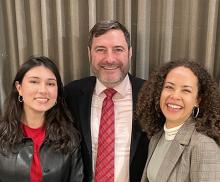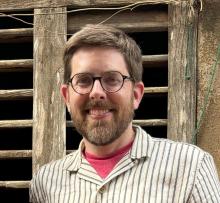
Professor of Anthropology Julia King was recently awarded a $110,000 grant from the National Park Service to fund a complete archeological overview and assessment of Piscataway Park in Prince George’s County, Maryland. This project will be conducted through a Cooperative Agreement under the Chesapeake Watershed Cooperative Ecosystems Study Unit. The Cooperative Agreement was signed August 14, 2020, and the project is expected to be completed by December 31, 2021.
Piscataway Park is a unit of the National Park Service administered by National Capital Parks—East. The park is located in Southern Maryland along the banks of the Potomac River. This park is significant because of the rich archeological resources located within the park and their impact on our modern understanding of Native American societies in the Eastern Middle Atlantic. Situated approximately 25 miles downriver from Washington D.C., lands within the park were home to the Potomac Valley’s indigenous inhabitants for thousands of years—dating as far back as 6,000 years ago and through the 1500s. Among the occupants were the Piscataway Indians of Southern Maryland whose ancestors still live nearby today.
Piscataway Park is the greatest resource of pre-contact and contact period American Indian archeological resources in the National Capital Region of the National Park Service. The park has been the subject of several archeological investigations, but there has never been a synthetic report of this work or a formal organization of this material for management needs. The scope and breadth of existing archeological collections also lend themselves to addressing future research questions related not only to the history of Piscataway Park, but also the Native American communities that once lived there.
The archeological overview and assessment will describe and assess the known and potential archeological resources at Piscataway Park. The overview reviews, summarizes and synthesizes existing archeological data in detail, assesses past work, identifies gaps in our understanding of the archeological data, and determines the need for and recommendations for future studies. The document will be a core baseline archeological resources management reference for the National Capital Parks—East unit. This project will also critically examine and evaluate museum collections from archeological sites in the park to assist in understanding the history of the park. Furthermore, this work will develop recommendations for future research for management of park resources and public education. Julie King is the principal investigator for the project, with Scott Strickland ’08 serving as research and GIS coordinator. The grant also includes funding for an assistant archaeologist, likely to be an SMCM alum, and two student assistants.
Pending available funding, King and NPS may continue the project into 2022 and beyond with a new cooperative agreement. Additional work will likely entail reviewing and assessing archaeological collections, completion of updating state site forms, and updating archeological site condition assessments for the National Park System’s online Cultural Resources Inventory System. Further work may also involve the production of a publicly accessible document (excluding sensitive archeological information) that will provide a detailed history of the Native American experience as linked to Piscataway Park, along with a Finding Aid/Collections Assessment document to complement the Archeological Overview and Assessment Document.



